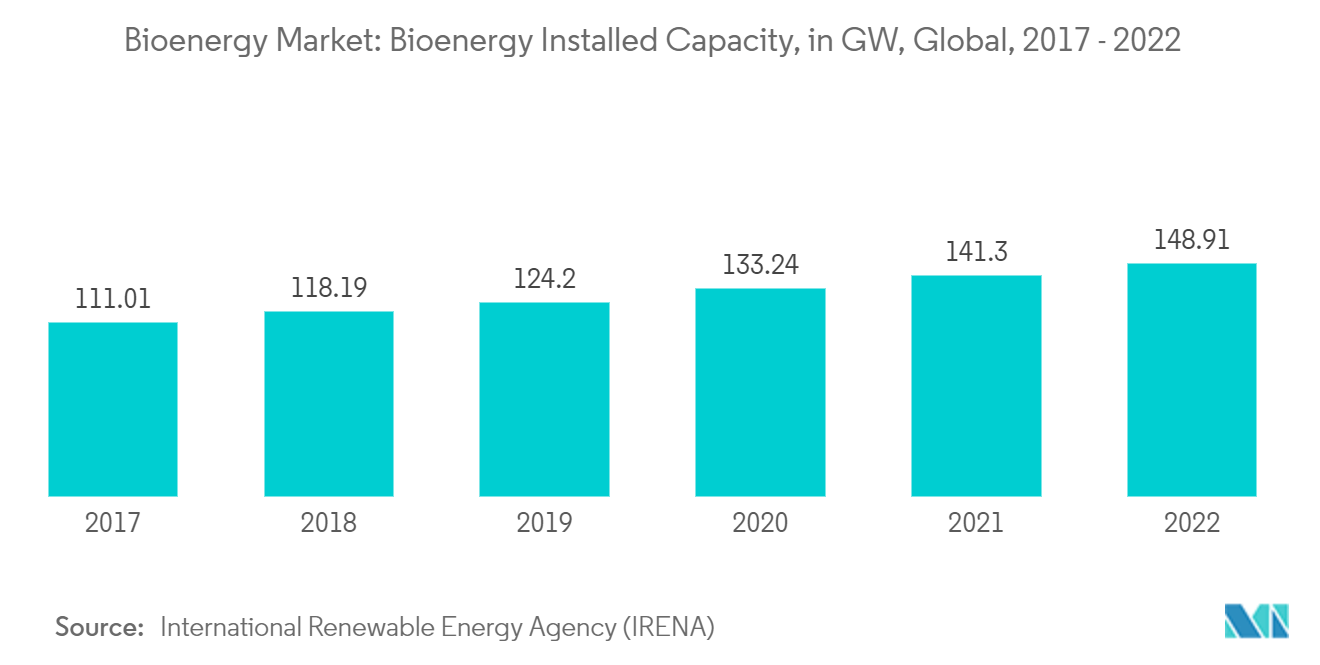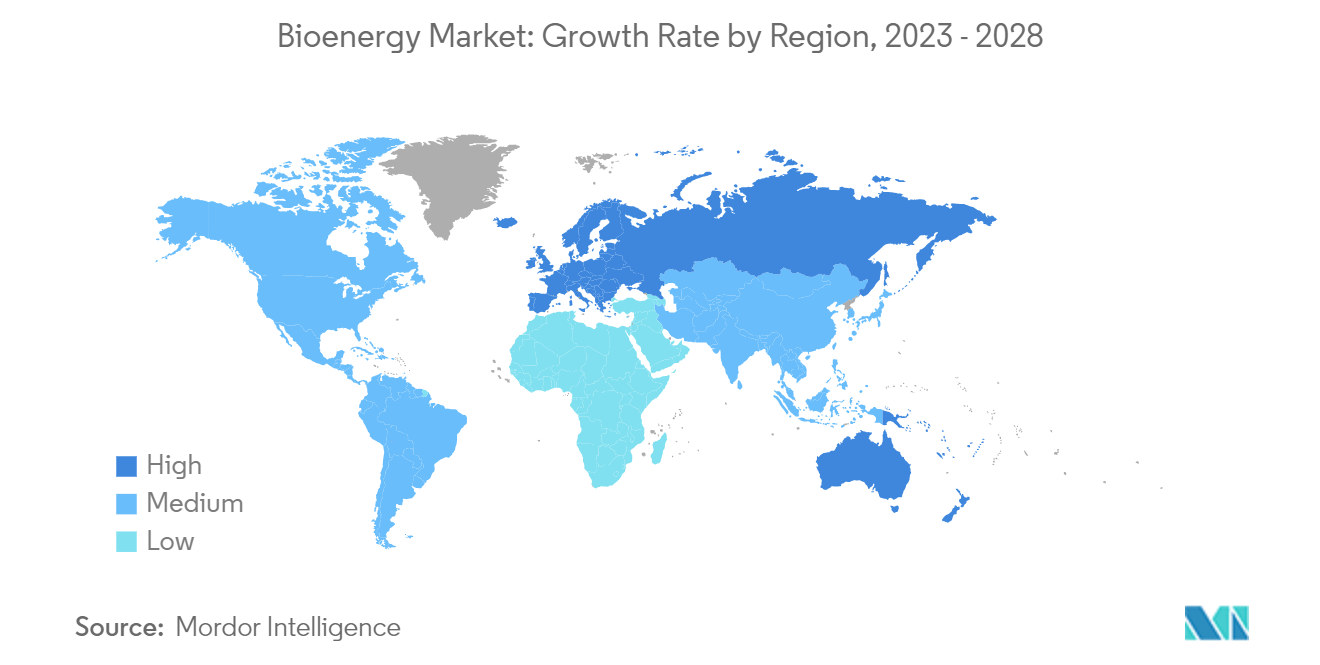Market Trends of Bioenergy Industry
Biomass is Expected to Dominate the Market
- Bioenergy is energy derived from biological materials characterized as organic materials with stored chemical energy like wood and manure.
- According to Internation Energy Association, Modern bioenergy is the largest renewable energy source globally, accounting for 55% of renewable energy and over 6% of the global energy supply. The adoption of modern bioenergy has increased on average by about 7% per year between 2010 and 2021 and is on an upward trend.
- According to the International Renewable Association, in 2022, the global installed capacity for bioenergy accounted for about 148.9 GW, with a 5% increase from 2021.
- Biomass supply comes from various feedstock - wood fuel, forestry residues, charcoal, pellets, agriculture crops and residues, municipal and industrial waste, biogas, biofuels, etc. Broadly, the supply can be classified into three main sectors - forestry, agriculture, and waste.
- In June 2023, the Indian government took the initiative to promote sustainable energy practices, and the Ministry of Power announced the revision of the biomass co-firing policy. This revision will enable power plants to purchase biomass pellets at benchmark prices, reducing import dependencies and enhancing the adoption of biomass as a renewable energy source.
- In June 2023, data gathered by the Energy Information Administration (EIA) showed that the total United States densified biomass fuel capacity reached 13.36 million tons in March 2023, with all of that capacity listed as currently operating or temporarily not in operation. Capacity included 1.96 million tons in the East, 10.51 million in the South, and 884,200 tons in the West.
- Therefore, with the increasing demand for renewable energy sources worldwide, biomass-based electricity generation is expected to witness a significant growth rate during the forecast period.

Europe is Expected to Dominate the Market
- Bioenergy is expected to remain crucial over the next decade to reach renewable energy targets in 2030. Hence, the European Union (EU) member states incorporated the bioenergy option in their National Renewable Energy Action Plans (NREAPs).
- Biomass is an essential renewable energy source and is a key factor in reaching the European renewable energy target by 2030, where the target for the share of renewables in the EU energy mix to 45% by 2030
- Bioenergy contributed to 5.8% of the total renewable energy installed capacity in Europe in 2022. Germany is expected to have 6.7% of its total installed capacity from bioenergy in 2023.
- In June 2023, the Energy Ministry of Spain announced plans to double its 2030 biogas and green hydrogen production targets. The revised plan sets a 2030 target of 11 gigawatts (GW) of electrolyzers, up from a previous target of 4 GW and biogas production to 20 terawatt hours (TWh).
- Germany is one of the crucial players in bioenergy, and the country is constantly expanding its bioenergy capacity. In February 2023, BioEnergy Germany company, which specializes in the design, construction, and operation of biogas plants, secured a contract for the construction of a 56 MWel biogas plant in Nkhotakota District in the Central Region of Malawi by BlueHills Capital Projects (Pty) Limited. The biogas plant will be fed with Napier grass from the surrounding plantations.
- Further, countries like Italy are likely to support the region's growth in the bioenergy sector. In June 2023, Enterra secured USD 38 million in project financing from UniCredit for a biomass plant in Italy. Located in Foggia in the southern region of Apulia, the 13 MW plant produces electric and thermal energy from biomass.
- Hence, with the upcoming projects and the targets to achieve a carbon-neutral environment during the upcoming years, the region is expected to have dominancy during the forecast period.


